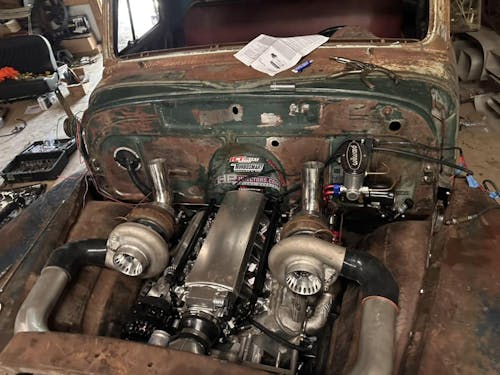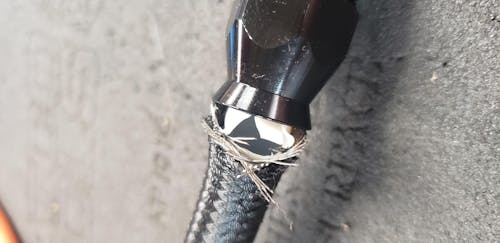HOW OIL CATCH CANS AND FUEL PUMPS CAN IMPROVE THE HEALTH OF YOUR ENGINE?
The engine of your car is a complicated system that calls for regular maintenance to run well. However, even as we are discussing about the maintenance of the engine, how can we forget the two essential components of this system which are the oil catch can and fuel pump? Oil catch can help to maintain your engine easily by taking out harmful oil vapors while the fuel pump makes sure that your engine gets the proper quantity of fuel to run properly. This blog will assist you in understanding how these parts work and maintaining them in appropriate condition can help your engine run smoothly and successfully.

What’s Inside This Guide
What Is An Oil Catch Can?

Oil catch can is a small piece of equipment that is installed inside the engine to help it stay simply clean and efficient. The oil catch can purpose is to trap the oil vapors and other different contaminants from the crankcase ventilation system before they enter the engine. These vapors can combine with the air and gasoline mixture by lowering the total performance of your engine and causing building up in parts of the engine. Oil catch can help in getting your vehicle to prolong engine life as well as growth performance, and keep a cleanser intake machine for the engine with accumulating those impurities.
How Does It Work?
The oil catch can purpose is simple because it holds harmful oil vapors and contaminants that flow into the engine of your car. As your engine runs, it generates these vapors which can be dangerous to its overall performance if allowed to recirculate. The oil catch can is placed in the ventilation machine of the engine to intercept those vapors. The vapors condense into liquid within the can, and the contaminants settle to the bottom. This prevents them from being damaged or building up on critical parts of your engine.
The benefits of an Oil Catch Can
- It keeps the engine clean by trapping harmful oil vapors and contaminants.
- The performance of your vehicle is increased by preventing the build-up of engine components.
- It increases engine life by reducing wear and tear.
- The oil catch can help to maintain consistent engine efficiency.
- It reduces the need for regular maintenance and repairs.
- The majority of vehicles have a simple installation process.
- A low-cost solution for preserving engine health for the long term.
What Is A Fuel Pump?

Gasoline is the main key part of your car, but how properly it gets to the engine depends on the fuel pump. This electric motor is positioned within the fuel tank module and serves as the coronary heart of the fuel transport system. Its primary function is to precisely transfer gasoline at high pressure to the fuel injectors resulting in peak engine performance. The fuel pump works in tandem with the fuel assembly which is a system that filters gasoline and monitors fuel levels. So when you turn on the ignition, the pump draws fuel through a filter sock to remove large debris. The pump pressurizes the filtered gasoline which is then refined by a finer filter before reaching the engine for combustion.
Types of Fuel Pump
Fuel pumps come in two primary varieties: electric and mechanical. Let's explore them;
Mechanical Fuel Pumps
A mechanical fuel pump uses a plunger or diaphragm to bring fuel in and then move it cyclically toward the carburetor and engine. It is a reliable choice for older cars with carbureted engines because it functions with the movement of the engine.
Electric Pumps
Modern vehicles that use electronic fuel injection require higher fuel pressure and electric pumps are the main attraction here. There are a few different types:
- In-Tank Pumps: The pump in most modern cars is fixed inside the fuel tank. This protects and cools the pump while it is submerged in gasoline.
- Inline Pumps: These pumps are more easy to replace than in-tank pumps because they are placed alongside the fuel line between the tank and the engine. They may be installed under the car or near the engine.
- Rotary Vane Pumps: Rotary vane pumps use positive displacement by employing a rotor with paddles that operate off-center within a cavity. This design incorporates pockets of space for fuel intake and release, ensuring a consistent flow. Pump variations include rolling vane, sliding vane, flexible vane, and swinging vane pumps.
- Gerotor Pumps: These pumps use positive displacement but with interlocking gears where a toothed inner gear and an outer ring gear with smooth curved lobes. As these gears rotate, they trap, pressurize, and release small pockets of fuel resulting in more efficient fuel delivery.
Common Issues of a Bad Fuel Pump
- Clogged or failed engines due to contaminated fuel.
- A faulty fuse caused the pump to stop temporarily.
- The pump is burning out due to normal wear and tear.
- Lack of power when going uphill or carrying heavy loads.
- Car will not start or requires multiple cranks to start.
- Almost stalled while accelerating from a stop.
- Sudden surges occur while driving.
- The engine sputters at high speeds.
- The fuel tank releases a whining noise.
- There is no humming noise from the pump when you turn the key.
Final Thoughts
Maintaining your engine with an oil catch can and a properly functioning fuel pump will greatly enhance the efficiency of your vehicle and longevity. The goal of the oil
catch can is to ensure that the engine runs smoothly by keeping impurities and dangerous fumes out of it. Meanwhile, an efficient fuel pump ensures that your engine receives the appropriate amount of fuel efficiently. You can avoid many common engine issues and drive a more reliable as well as effective car by being aware of and taking care of these elements. So do take care of your engine, and it will surely give you a tremendous driving experience.


![EVIL ENERGY 4/6/8/10AN PTFE Fuel Line Kit | E85 Nylon Braided Hose | 16/20FT Black Black with Comprehensive Fittings [20FT]](http://www.ievilenergy.com/cdn/shop/files/Test-2025-Evilenergy-125598065_165x.png?v=1739239236)
![ptfe hose fitting kit [16FT]](http://www.ievilenergy.com/cdn/shop/files/Test-2025-Evilenergy-125598171_165x.png?v=1739239236)
![CPE Fuel Line[25FT]](http://www.ievilenergy.com/cdn/shop/files/25FTCPE_FuelLine_165x.png?v=1735220649)
![CPE Fuel Line[20FT]](http://www.ievilenergy.com/cdn/shop/files/20FTCPE_FuelLine_165x.png?v=1735220649)















